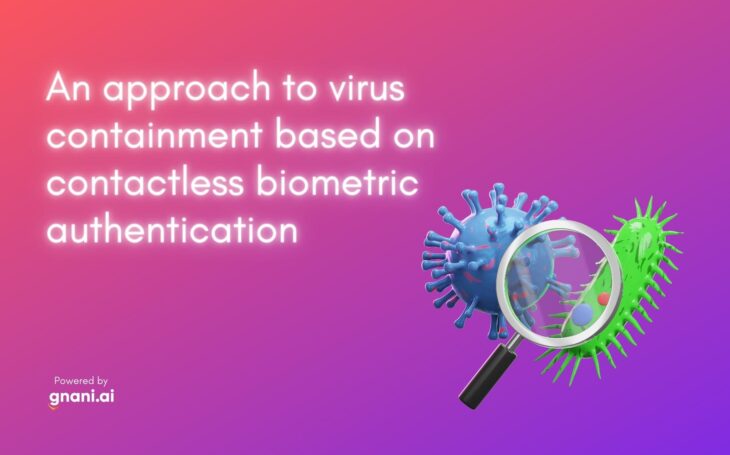
In the current digital age, it is more important than ever to have secure methods of authentication for accessing vital information. In the case of a virus outbreak, it is crucial to be able to contain the infection and prevent it from spreading. Contactless biometric authentication can play an important role in virus containment. Traditional passwords and ID cards can be easily compromised, but fingerprint or retina scanning provides a much more secure means of authentication. In this blog post, we will explore the role of contactless biometric authentication in virus containment and how it can help to keep your organization safe. Many businesses and organizations are looking for ways to help prevent the virus from spreading.
One solution that is gaining traction is contactless biometric authentication. This technology uses sensors to capture biometric data, such as a fingerprint or iris scan, without the need for physical contact. This can be helpful in preventing the spread of viruses, as it eliminates the need for people to touch common surfaces, like door handles or keyboards. In addition, contactless biometric authentication can help to reduce congestion in high-traffic areas, as people will not need to queue up in order to have their identity verified. As the world looks for ways to contain the spread of viruses, contactless biometric authentication may play an important role in helping to keep people safe.
When a virus outbreak occurs, the first step is to contain the infection. This can be done by isolating the affected area and preventing people from coming into contact with the virus. Contactless biometric authentication can help to achieve this by preventing unauthorized access to areas that are under quarantine. By using fingerprint or retina scanning, you can ensure that only authorized personnel are allowed access to the affected area. This can help to prevent the virus from spreading and allow for more effective containment measures.
How does contactless biometric authentication work?
Contactless biometric authentication is a type of authentication that uses biometrics, such as fingerprints, and voice or iris scans, to verify someone’s identity. This type of authentication is typically used in situations where it is not practical or possible to physically touch the person or object being authenticated, such as when authenticating a person at a distance or authenticating an object that is in a difficult-to-reach location.
Contactless biometric authentication can also be used in situations where physical contact would be undesirable, such as when authenticating a person with a contagious disease. To use contactless biometric authentication, the person or object being authenticated is first scanned by a sensor, which captures data about its unique biometric features. This data is then compared to a database of stored biometric data to verify the person’s identity. Contactless biometric authentication is often used in combination with other forms of authentication, such as passwords or PIN numbers, to provide an extra layer of security.
There are many benefits to using contactless biometric authentication, especially in the case of a virus outbreak. By using this type of authentication, you can help to prevent the spread of the virus by eliminating the need for people to physically touch common surfaces. In addition, contactless biometric authentication can help to reduce congestion in high-traffic areas, as people will not need to queue up in order to have their identity verified. As the world looks for ways to contain the spread of viruses, contactless biometric authentication may play an important role in helping to keep people safe.
Benefits of using contactless biometric authentication?
There are many benefits to using contactless biometric authentication, especially in the case of a virus outbreak. By using this type of authentication, you can help to prevent the spread of the virus by eliminating the need for people to physically touch common surfaces. In addition, contactless biometric authentication can help to reduce congestion in high-traffic areas, as people will not need to queue up in order to have their identity verified. As the world looks for ways to contain the spread of viruses, contactless biometric authentication may play an important role in helping to keep people safe.
Challenges of using contactless biometric authentication
There are a few challenges that need to be considered when using contactless biometric authentication. First, the accuracy of the authentication process can be affected by factors such as distance, lighting and angle. In order to ensure accurate authentication, it is important to have a well-designed system in place. Additionally, contactless biometric authentication systems can be expensive to implement and maintain. However, the benefits of using this type of system may outweigh the costs in situations where preventing the spread of a virus is a priority.
Conclusion
Contactless biometric authentication can be an effective way to help prevent the spread of viruses, especially in high-traffic areas. However, it is important to consider the accuracy of the system and the costs of implementation and maintenance when deciding whether or not to use this type of authentication. As the world becomes increasingly digitized, it is more important than ever to ensure that our security measures are up to date. A contactless biometric authentication is a powerful tool that can help us protect our data and keep our systems safe from viruses and other threats. With proper implementation, contactless biometric authentication can be an effective way to contain outbreaks and prevent the spread of infection.
What’s your take on such authentication techniques? Which type of contactless authentication will you choose for you? Let me know in the comments!




